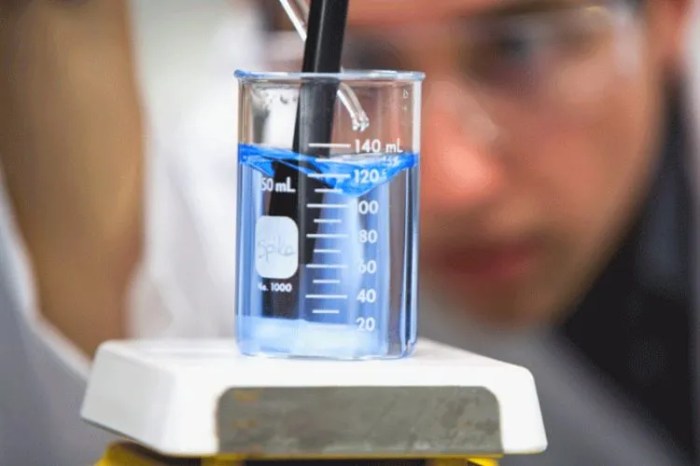How to Lower pH in Plant Water
Understanding Plant pH and its Importance
How to lower ph in plant water – Maintaining the correct pH level in your plant’s water is crucial for healthy growth. The pH scale, ranging from 0 to 14, measures the acidity or alkalinity of a solution. A pH of 7 is neutral; below 7 is acidic, and above 7 is alkaline. Different plants thrive within specific pH ranges, and deviations can significantly impact nutrient uptake and overall plant health.
Ideal pH Ranges for Various Plant Types
Most plants prefer a slightly acidic to neutral pH range (6.0-7.0). However, some plants tolerate or even prefer more acidic or alkaline conditions. Acid-loving plants, like azaleas and rhododendrons, thrive in a pH range of 4.5-5.5, while succulents often tolerate a slightly higher pH.
Consequences of High and Low pH on Plant Health
High pH (alkaline) can lead to nutrient deficiencies, particularly iron, manganese, and zinc. This can result in chlorosis (yellowing of leaves), stunted growth, and reduced flowering. Conversely, low pH (acidic) can also cause nutrient deficiencies, as well as damage to roots, hindering water and nutrient absorption. Extreme pH levels can be toxic to plants.
Examples of Plants Sensitive to pH Fluctuations
Many common houseplants are sensitive to pH fluctuations. African violets, for example, are quite sensitive to alkaline conditions, while hydrangeas are known for their color changes depending on soil pH. Orchids also require a very specific pH range for optimal growth.
pH Tolerance of Common Houseplants
| Plant | Ideal pH Range | Minimum Tolerable pH | Maximum Tolerable pH |
|---|---|---|---|
| African Violet | 6.0-7.0 | 5.5 | 7.5 |
| Pothos | 6.0-7.0 | 5.0 | 8.0 |
| Snake Plant | 6.5-7.5 | 6.0 | 8.0 |
| Peace Lily | 6.0-7.0 | 5.5 | 7.5 |
Methods for Lowering pH in Plant Water
Several methods exist for lowering the pH of your plant’s water, ranging from readily available household items to specialized chemical solutions. The choice depends on the severity of the pH imbalance and your personal preference.
Lowering pH with Acidic Substances
Lemon juice, white vinegar, and phosphoric acid are common choices. Always dilute these substances significantly before adding them to your plant’s water. Use a pH meter to monitor the changes and avoid over-acidification. For example, a few drops of lemon juice or vinegar per gallon of water might suffice, but always test and adjust gradually.
Using Elemental Sulfur to Lower pH
Elemental sulfur is a slow-release acidifier. Add it to the soil or water according to package instructions, carefully following safety guidelines. Wear gloves and eye protection when handling sulfur. Its effect is gradual, providing a more sustained pH adjustment.
Comparison of pH Lowering Agents
Lemon juice and vinegar are readily available and relatively safe, but their effect is less predictable and requires frequent monitoring. Phosphoric acid is more potent and effective but requires precise measurement and careful handling due to its corrosive nature. Elemental sulfur offers a longer-lasting effect but is slower-acting.
Step-by-Step pH Adjustment Procedure
- Test the pH of your water using a pH meter or test kit.
- Choose a pH lowering agent (e.g., lemon juice).
- Add a small amount of the chosen agent to a sample of water.
- Test the pH of the solution.
- Repeat steps 3 and 4 until the desired pH is reached.
- Apply the adjusted water to your plants.
Natural Methods for pH Adjustment: How To Lower Ph In Plant Water
Besides lemon juice and vinegar, several other natural materials can help lower water pH. These methods offer a more environmentally friendly approach to pH adjustment.
Natural Materials for pH Adjustment
Peat moss, composted manure, and even coffee grounds can contribute to lowering soil and water pH. These materials release organic acids over time, gradually acidifying the soil and water. The rate of acidification varies depending on the material and its decomposition rate.
Preparing a pH-Lowering Solution Using Natural Ingredients
A simple solution can be prepared by soaking a small amount of peat moss in water for a few days. The resulting solution will have a lower pH than plain water. Always test the pH before using it on your plants to avoid over-acidification.
Benefits and Drawbacks of Natural Methods

Source: thepracticalplanter.com
- Benefits: Environmentally friendly, sustainable, often readily available.
- Drawbacks: Slower-acting than chemical methods, can introduce other elements into the soil (which may be beneficial or detrimental), requires more monitoring.
Monitoring and Maintaining pH Levels
Regular monitoring is essential to maintain optimal pH levels. Consistent monitoring prevents extreme fluctuations and allows for timely corrections.
Regular pH Monitoring
Use a pH meter or test kit to check the pH of your plant’s water regularly, ideally every few waterings. A pH meter provides a more accurate reading than test strips. The frequency of testing depends on the plant’s sensitivity to pH changes and the method of pH adjustment used.
Preventing Drastic pH Fluctuations
Use filtered or distilled water to reduce the initial pH variability. Avoid using tap water with high mineral content, as this can contribute to pH fluctuations. Gradually adjust the pH, making small changes at a time, to prevent shocking the plants.
Interpreting pH Test Results
A pH meter will provide a numerical value. Test strips typically display a color change that corresponds to a pH range. Compare the obtained value to the ideal pH range for your specific plants. Adjust the pH accordingly, using the methods described earlier.
Visual Representation of Ideal pH Range
Imagine a color-coded chart. The horizontal axis represents the pH scale (0-14), and the vertical axis represents different plant types (e.g., African violets, orchids, succulents). Each plant is represented by a colored bar, extending across its ideal pH range. The bar color could represent the plant’s health at that pH level, with green indicating optimal health, yellow indicating mild stress, and red indicating severe stress.
A sample pH test strip could be shown alongside, illustrating how to interpret the color change in relation to the chart.
Troubleshooting Low pH Issues
While low pH is less common than high pH, it can still significantly harm plants. Early detection and appropriate action are crucial to prevent long-term damage.
Problems Associated with Excessively Low pH

Source: theskilledgardener.com
Nutrient deficiencies, especially of phosphorus and molybdenum, can occur. Root damage and reduced water uptake are also potential problems. The plant’s overall vigor and growth rate can be severely impacted.
Symptoms of Plants Suffering from Overly Acidic Conditions
Symptoms can include stunted growth, yellowing or browning of leaves (chlorosis or necrosis), poor flowering, and wilting, even with adequate watering. The specific symptoms can vary depending on the plant species and the severity of the acidic conditions.
Correcting an Overly Acidic Environment
Gradually increase the pH by adding a base such as lime (calcium carbonate) to the soil or water. Use a pH meter to monitor the changes and avoid over-correcting. Always add small amounts of the base at a time, testing the pH after each addition.
Long-Term Effects of Consistently Low pH, How to lower ph in plant water
Prolonged exposure to excessively low pH can lead to irreversible damage to the root system, hindering the plant’s ability to absorb nutrients and water. This can result in stunted growth, reduced yield, and ultimately, plant death. Therefore, maintaining a stable and appropriate pH is crucial for long-term plant health.
FAQs
Can I use baking soda to lower pH?
No, baking soda (sodium bicarbonate) is alkaline and will raise, not lower, the pH of your water.
How often should I check my plant water’s pH?
Ideally, check the pH weekly, or more frequently if you notice signs of nutrient deficiency or plant stress.
What are the signs of overly acidic plant water?
Symptoms include yellowing leaves (chlorosis), stunted growth, and brown leaf tips. The plant may also exhibit poor nutrient uptake.
What if I don’t have a pH meter?
Liquid pH test kits are readily available and provide a relatively accurate measurement. However, a digital pH meter offers more precise readings.




















